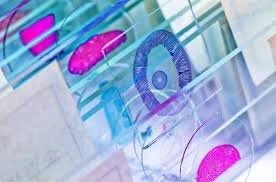What are Blood Samples?
Blood samples are most commonly obtained from the antecubital fossa where the veins are closest to the surface. The blood sample can be taken by anyone from a doctor to a phlebotomist or a nurse. Most blood sample collections will occur at a clinic, hospital, or at a pathology collection center. A tourniquet is first wrapped around the upper arm to slow down the blood flow while the area where the insertion area for the needle is cleaned with an antiseptic cloth. The needle is inserted, and the blood sample is transferred into containers or tubes. Proper dressing of the wound is then administered to prevent infection and to keep it clean. These tubes are then labeled with a unique identification number along with other important information. These samples are then transported to their respective destinations, such as laboratories or biorepositories.
An Introduction to Biorepositories
Biobanks and biorepositories assist in providing the materials required in clinical trials and research. There is a growing number of biobanks that help to collect data and samples from the population as a response to the increased demand of these services. The services provided by various biobanks also mean that acquiring biological materials can be guaranteed. The existence of biobanks has allowed the accumulation of biological samples from various resources.
Biospecimens in Biobanks
Some of the examples of human biospecimens available through biorepositories include both normal and diseased states such as:
Purified DNA
Hair tissue
Nail
Whole blood
Plasma
Serum
Red blood cells
Platelet concentrates
Platelet-rich plasma
Saliva
Semen
Breast milk
Organ tissue
Etcetera
All specimens should be collected and processed according to the proper guidelines and procedures.
Functions of Biorepositories
While collecting biospecimens, biorepositories also collect demographic data such as medical history, lifestyle habits, medications, and family history to create an accurate scientific database. These samples are only labeled with a unique code for identification purposes. These specimens are then maintained in the proper environment and equipment to ensure the highest quality. Another crucial point in the management of any biobank is the privacy and rights of the donors. This means biobank managers need to train their staff regarding the policies and standard operating procedures (SOPs) of the biobank.
Whole Blood and Blood Cells
In human biospecimens, the buffy coat and whole blood are essential for biorepositories. Whole blood refers to a sample that consists of red blood cells, white blood cells, platelets, and plasma. The buffy coat describes the white blood cells and platelets that form the anti-coagulated blood sample. Both these samples are essential as they are the main source for cellular nucleic acids, construction of a DNA biobank, and achieving the maximum quality and quantity of germline DNA.
Storage for Human Blood Cells
Blood is one of the most common biospecimens collected in human biobanks as it is a source for DNA and RNA. This is why anti-coagulated blood is a prerequisite for plasma-derived cell-free circulating nucleic acid molecules and genomic or mitochondrial DNA and RNA. One of the most commonly used anticoagulants is ethylenediaminetetraacetic acid (EDTA) for various protein assays and DNA based studies. However, citrate is more appropriate for white blood cell cultures. Storage conditions and quality of biospecimens are of vital importance as it determines the yield of extracted DNA and RNA from buffy coat or whole blood samples.
Since RNA is easily degradable, the World Health Organization – International Agency for Research on Cancer (WHO-IARC) has suggested that it be stored in nitrogen storage below -130⁰C. Samples stored at -140⁰C by liquid nitrogen have been observed to keep the RNA in a functional state and intact for more than 50 months. To maintain the biospecimen’s reliability and preventing the possibility of multiple freeze-thaw cycles, DNA protection and stabilization can be done at room temperature which eliminates the costs for freezer storage and lowering maintenance costs for biobanks. While purified DNA can be stored at -20⁰C for months, both purified DNA and RNA are much more stable at -80⁰C in nuclease-free water or aqueous buffers for long-term storage.
For plasma, anticoagulants such as lithium-heparin and EDTA can be used. Storage of both serum and plasma at -80⁰C have shown that there is adequate stability in the different biomolecules. The cycle of freezing and thawing should be avoided as it leads to the degradation of nucleic acids and proteins.
Conclusion
Due to the increasing scientific developments in the past few years, it has increased the need for biological material in clinical trials and research. Biorepositories play a crucial role in supporting the researcher’s access to samples that meet their scientific criteria. It is important for biobanks to play their role in the management of data, collection, processing, and storage of biospecimens.
References:
Mohamadkhani A, Poustchi H. Repository of Human Blood Derivative Biospecimens in Biobank: Technical Implications. Middle East J Dig Dis 2015;7:61-8.






